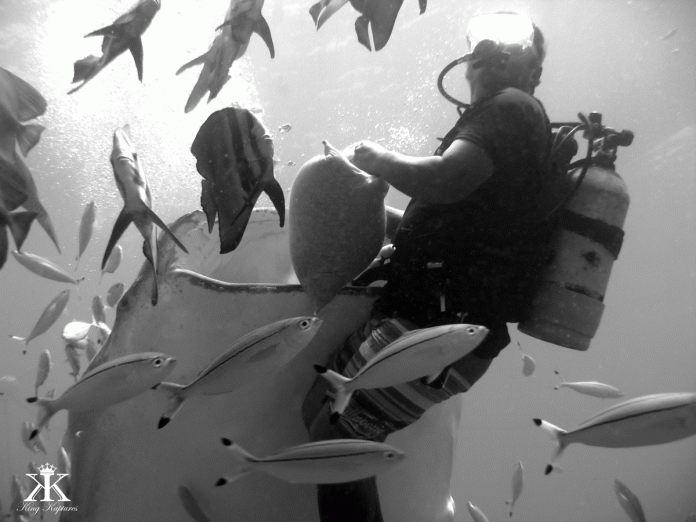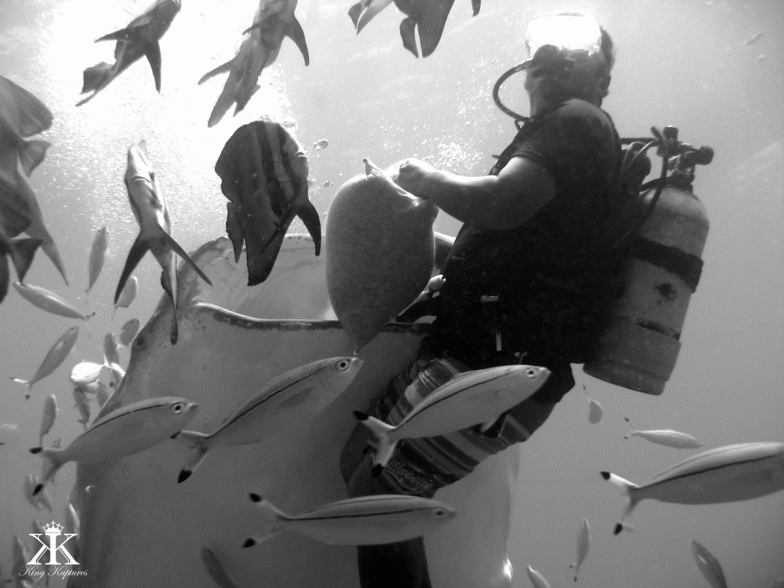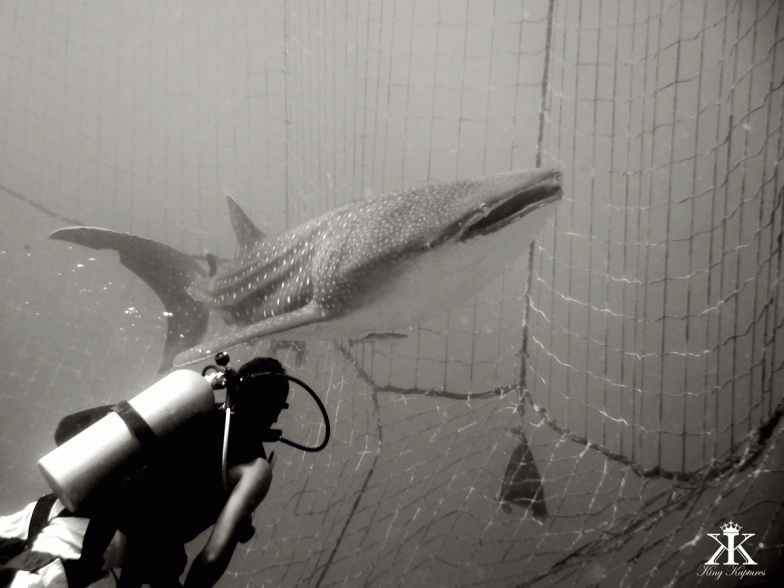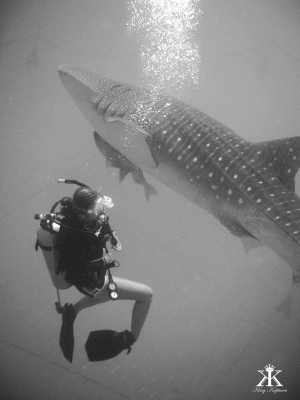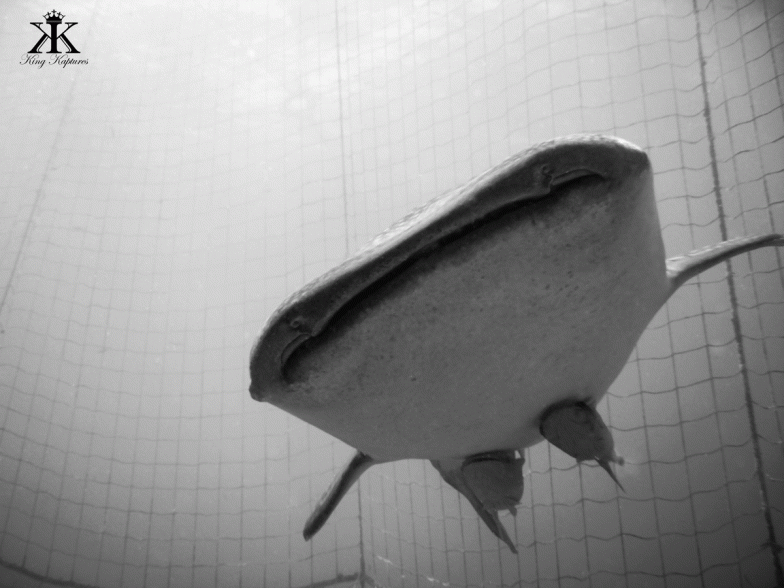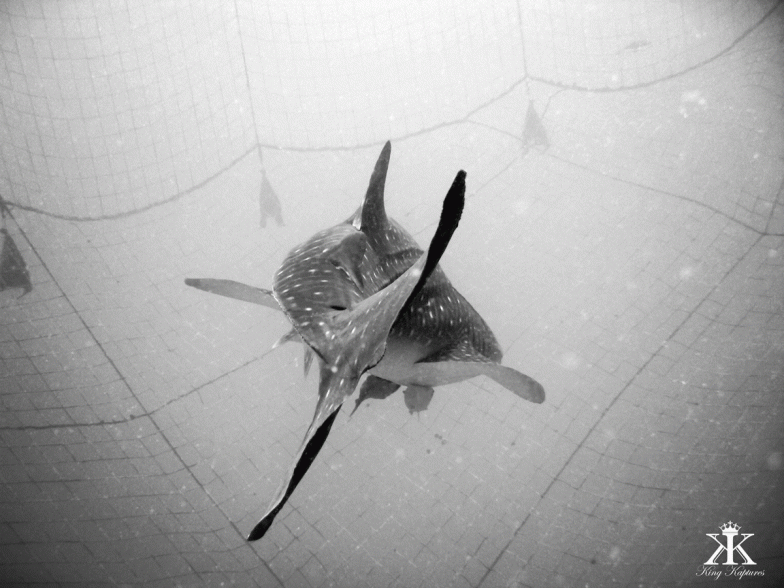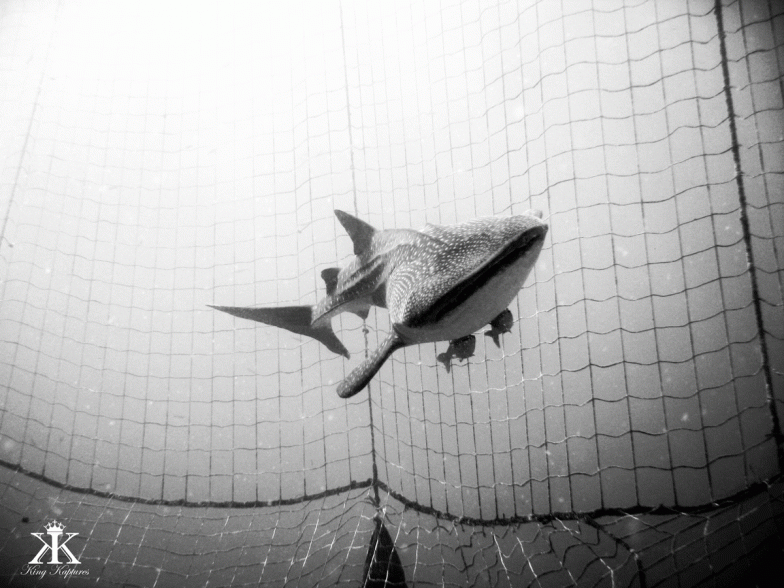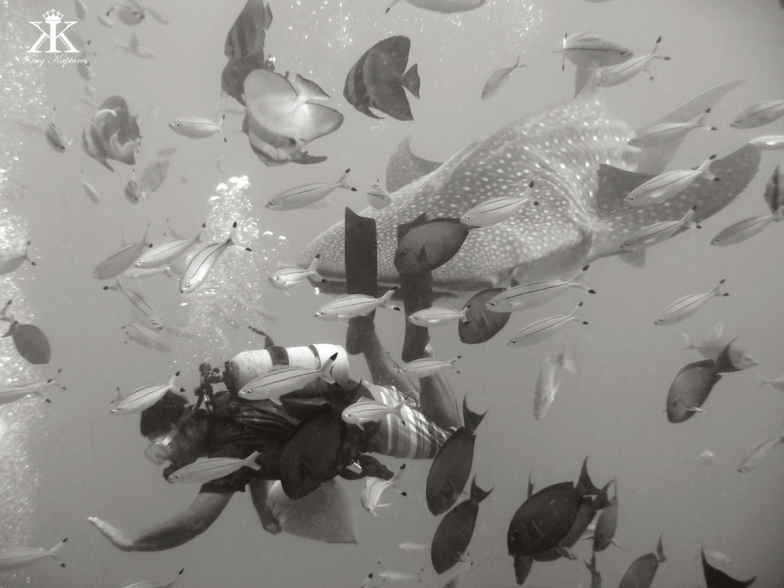CONTRIBUTED BY KEVIN KING
The animal passed close abeam, close enough that I could stretch out an arm and allow my hand to brush against the length of its flesh as it swam by. I was breathing slowly, trying to take in as much as I could, this being my first time swimming with such massive creatures. But just as the gentle giant was halfway past, it decided on a rather abrupt change of course. In doing so, its tail started a full swing in my direction, with both speed and force. Seeing it coming and knowing I was no more than a rubber ducky in bathtub, I turned to take the impact on my back. “UGH” I went as the tail struck solidly, and then smoothly shoved me aside. Spinning back around, I was able to see the tail, as tall as I, complete its strong follow-through. Truly a massive and powerful creature!
The whale shark is a slow-moving filter feeding shark and the largest known living fish, growing as long as 40 feet and weighing in excess of 20 tons. They are, by far, the largest living non-mammalian vertebrate, and are thought to have originated about 60 million years ago. Whale sharks have very large mouths which they use to filter-feed, mainly on plankton. Despite its size, the whale shark does not pose significant danger to humans; they are docile fish and juveniles often play with scuba divers.
Although you can view these magnificent creatures in Okinawa’s fabulous Churaumi Aquarium (沖縄美ら海水族館), one of the few in the world that display multiple what sharks, they cannot be truly appreciated unless you are wet, up close, and personal! And the waters off Okinawa’s west coast offer just the opportunity. The experience can be booked through the “Torii Scuba Locker,” one of the military-run dive shops on the island at Torii Station, but a local Japanese boat is used, although you are escorted and guided by an American Divemaster for the trip.
The dive trip starts at the Torii Scuba Locker, where anything you may need for the dive can be easily and cheaply rented or purchased. After filling out standard paperwork, a group briefing is provided which clearly lays out the flow of the dive. The only real concern of this particular dive that diving will occur in an overhead “netted” environment that offers no direct access to the surface, and the slight possibility of temporary entanglement with the net. Both concerns are easily addressed by the Divemaster. Caravanning to the nearby Yomitan Fishing Port, you’ll park in proximity to the dive boat and setup your kit. The actual boat ride to the site is measured in single digit minutes, so it’s important to be ready to go. And, although it’s a short boat ride, it can be rough: take your Dramamine at least an hour before boarding.
At the whale pen, a low back-roll will get you quickly into the water, and after your Divemaster splashes in, a quick descent and check of the group is completed en route to the underwater opening at the top of the cylinder-shaped netted pen.
The top of the pen is about 15 feet below the surface, where the first distant, hazy glimpses of the giants can be had. The whale sharks kept here, while not anywhere near record size, still dwarf the divers as they enter the cage. We swam with two individual specimens, one smaller at about 18’, and the other quite larger, at least 25-28’ in length! The actual enclosure is much larger than you might think; it’s impossible to see completely across the 330 feet from side to side, while the floor of the pen bottoms out at 65-70’.
We waited at the net while the lead Japanese Divemaster opened the entry and cleared the way. Passing head down through a small hole in the top edge of the net, our group gathered inside, where we observed feeding for about 10 minutes. An abundance of other fish, all hangers-on, continually clouded our view in their hopes of bagging some spillover krill, a whale shark favorite food.
When the feeding concluded, the Japanese Divemaster signaled “free swim” with a loud rattle. Whale sharks are not shy; if they think you have food, they will approach straightforwardly, sometimes with their mouths wide-open. While that sight can be intimidating, the fish are not aggressive, and upon realizing you have no food, off they veer.
As the larger shark tended to stay shallow, I descended to near the bottom of the pen, where I was almost alone. There was only one other Japanese diver there and we enjoyed the smaller animal that swam this lower depth’s perimeter. Having the animal brush right by and interact with us eye-to-eye was astonishing.
Free-swim lasts about 20 minutes, and sure enough around a half hour into the dive we heard another series of rattles from the Japanese. Sadly, time to leave our new aquatic friends. We completed our three minute safety stop and ascended to our boat.
Those who have a chance to swim with whale sharks will never forget such a magical encounter.
Reservations to dive (sorry, no snorkeling option) with the whale sharks must be made 24 hours in advance, and the trip costs $135 per person – tanks included. An Advanced Open Water certification OR more than 20 logged dives is required. Contact Torii’s Scuba Locker at 644-4263 and ask for Ashley – she’ll take good care of you!


